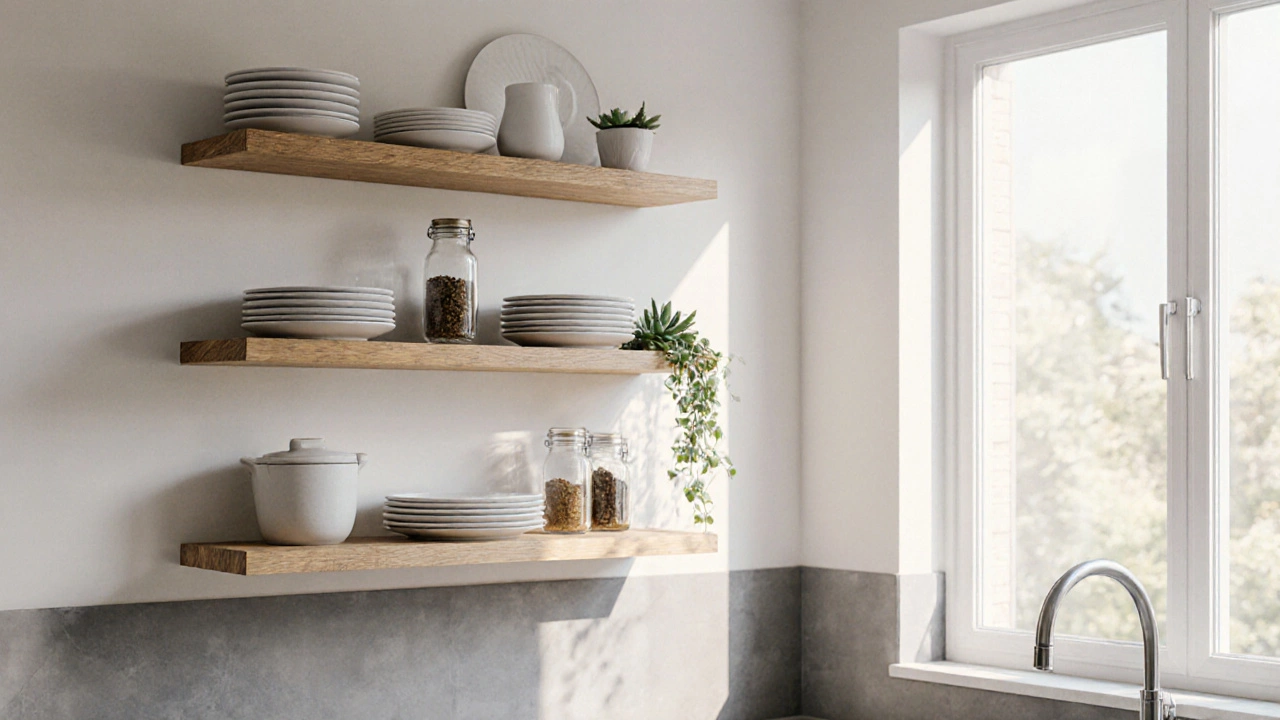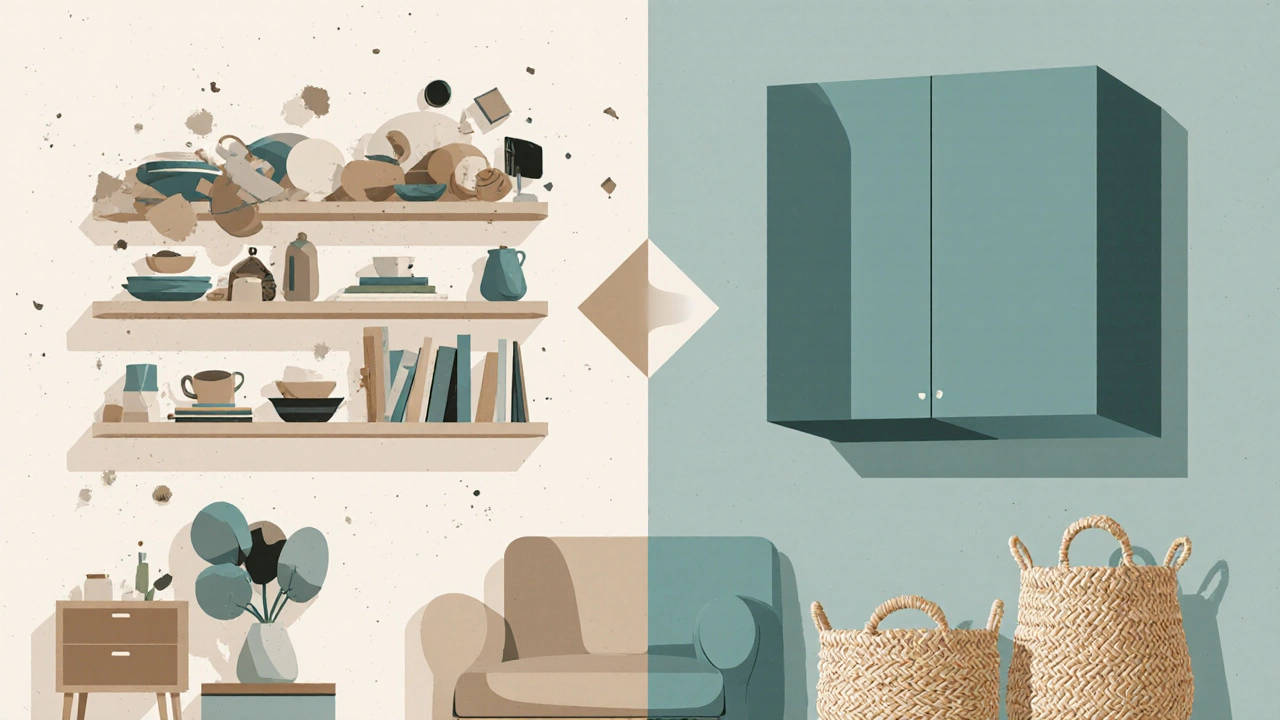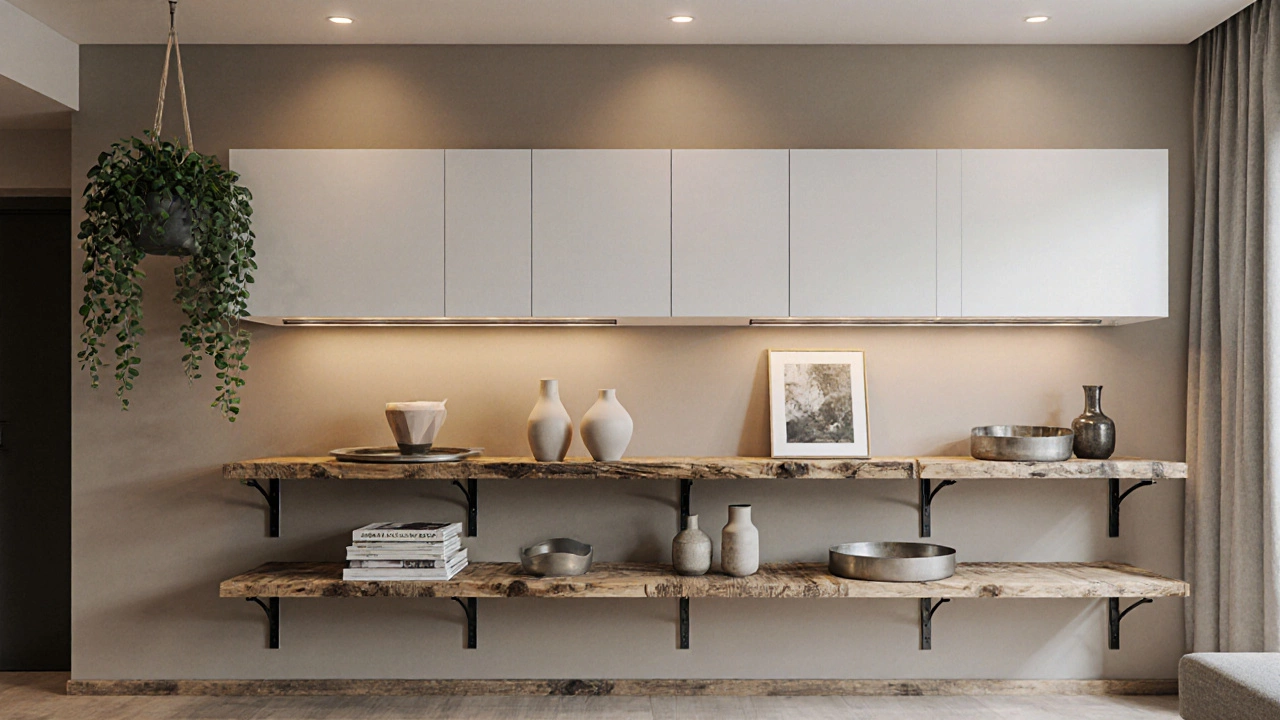Open Shelving Trends 2025: Is It Going Out of Style?
 Oct, 26 2025
Oct, 26 2025
Open Shelving Trend Quiz
Is Open Shelving Right for Your Home in 2025?
Answer these 5 questions to get personalized advice based on the latest design trends. This tool will help you determine if open shelving is a good choice for your space.
Open shelving is a wall‑mounted storage solution that leaves the back and sides exposed, letting the items you display become part of the room’s visual story. In the last few years it’s been the go‑to look for kitchens, living rooms and even bathrooms. But design cycles turn quickly-what’s hot today can feel dated tomorrow. Below we break down the signals that suggest whether open shelving is still a safe bet for 2025 or if it’s time to tuck those shelves behind doors.
Why Open Shelving Went Viral
Three forces pushed open shelving into the spotlight:
- Minimalist aesthetics: Clean lines and visible storage fit the “less is more” vibe.
- Sustainable living: Fewer cabinet doors mean less material and easier access to items, encouraging reuse.
- Social media: Instagram feeds full of neatly arranged jars, plates and books turned the style into a visual shorthand for an organized, curated home.
Designers such as Kelly Wearstler showcased open shelving in high‑end projects, and the look quickly filtered down to mass‑market retailers.
Key Signs the Trend Is Cooling
If you start noticing any of the following, the style might be on its way out:
- **Over‑exposure fatigue** - Readers of major design magazines are now highlighting the clutter‑risk that comes with visible storage.
- **Rise of hidden storage** - Trade shows in 2024 featured sleek soft‑close cabinets and modular drawer systems as the new "in".
- **Shift toward texture** - Textured panels, woven baskets and acoustic wall coverings are replacing plain wood planks as focal points.
- **Eco‑concern over waste** - Studies from the Sustainable Design Institute (2025) show that open shelving can lead to more disposed dishes when items are not stored properly.
What’s Replacing Open Shelving?
Designers aren’t abandoning shelves; they’re rethinking how they appear:
- Floating cabinets: Same wall‑mounted look but with concealed fronts, giving a seamless surface.
- Glass‑front shelves: Offer visibility while protecting items from dust.
- Modular wall units: Combine open and closed sections, allowing you to hide clutter when needed.
- Reclaimed wood ledges: Bring warmth and a story‑telling element that feels less sterile.

Open Shelving vs Closed Storage: Quick Comparison
| Aspect | Open Shelving | Closed Storage |
|---|---|---|
| Visual impact | Shows off items, adds personality | Creates a uniform surface, hides mess |
| Maintenance | Requires regular dusting | Less frequent cleaning |
| Flexibility | Easy to rearrange displays | Fixed layout unless doors are removed |
| Cost | Generally cheaper (no hinges) | Higher due to hardware and doors |
| Durability | Exposed edges can chip | Protected surfaces last longer |
How to Future‑Proof Your Shelving Choice
Whether you keep open shelves or switch to a hybrid, follow these three rules to avoid looking dated in a year:
- Mix open with closed. Install a few concealed cabinets next to open planks. This gives you the display benefit while providing a place to stash things you don’t want on view.
- Use timeless materials. Solid oak, walnut or reclaimed pine age gracefully. Avoid trendy laminates that may feel cheap after a season.
- Plan for adjustable hardware. Track‑system brackets let you raise or lower shelves without drilling new holes, adapting to changing décor.

Design Tips for 2025
Even if open shelving stays, you can refresh it with these subtle tweaks:
- **Layer textures:** Add ceramic pots, woven baskets and metal trays for visual depth.
- **Play with height:** Stagger shelf heights instead of uniform rows to break the monotony.
- **Integrate greenery:** Small succulents or hanging air plants bring life and soften the rigid lines.
- **Use neutral backings:** A light‑gray or matte white backdrop reduces glare and lets the items pop.
Quick Checklist: Is Open Shelving Right for You?
- Do you enjoy displaying collections? ✔️
- Is your home low‑traffic (dust isn’t a big issue)? ✔️
- Do you have a style that leans minimalist or industrial? ✔️
- Are you comfortable with regular cleaning? ✔️
- Do you need hidden storage for messy items? ✖️ (Consider adding cabinets)
Bottom Line
Open shelving isn’t dead, but it’s definitely maturing. The era of “show everything” is giving way to a smarter blend of visible and concealed storage. If you love the look, keep it-but pair it with hidden options, choose long‑lasting woods, and stay flexible with adjustable brackets. That way your kitchen or living room will feel fresh in 2025 and beyond.
Will open shelving make my kitchen look cluttered?
Only if you fill every slot with items. Curate a few statement pieces, use uniform containers, and leave some negative space to keep the look airy.
What material is best for long‑lasting open shelves?
Solid hardwoods like oak, walnut or reclaimed pine are durable and develop a patina over time. Avoid thin particleboard laminates if you want the shelves to age well.
How often should I clean open shelving?
A light dusting weekly keeps dust from building up. For kitchens, wipe down with a mild cleanser after cooking to avoid grease stains.
Can I combine open shelving with cabinets in the same wall?
Absolutely. A mixed wall creates visual interest and gives you the best of both worlds-display space and hidden storage.
Is open shelving suitable for small apartments?
Yes, especially when you use floating shelves that don’t intrude on floor space. Keep the number of shelves low and choose light‑colored wood to avoid a heavy feel.